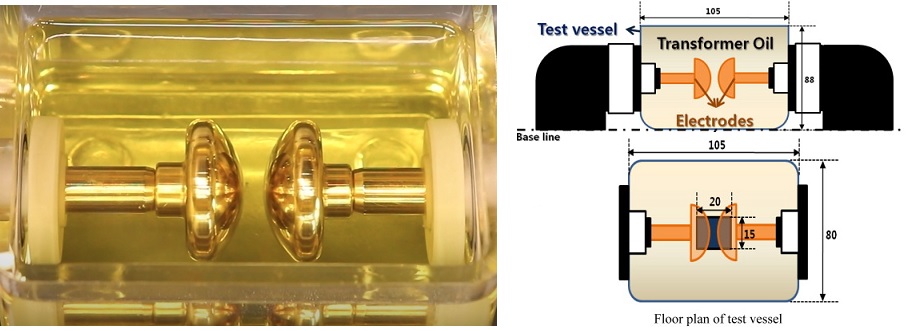What is the cause of inaccurate oil BDV test results?
Transformer oil plays the role of insulation and cooling, and must have a certain dielectric strength during operation. In order to ensure the safe and reliable operation of the transformer, in addition to protecting the transformer oil in operation and preventing premature aging, oil sample testing should also be carried out regularly to understand the oil quality status during operation. For newly installed transformers. An oil sample test should also be performed prior to operation. The breakdown voltage test of transformer oil is one of the main items of transformer oil test. This article only talks about some problems in the breakdown voltage test.

1. The dielectric strength (also called breakdown voltage) of transformer oil is related to the weather and atmospheric pressure in the test environment. It is related to the atmospheric pressure of the test environment below 25°C. Water is divided into emulsified water state, so the breakdown voltage value of oil decreases with decreasing temperature,
However, when the temperature is lower than 0°C, the breakdown voltage of the oil will increase because the water in the oil is all decomposed into ice. Generally, the breakdown voltage is the highest when the oil temperature is 65-80°C, because the water component in the oil dissolves in the oil. If the temperature exceeds 80°C, the breakdown voltage begins to drop again. This is because the energy of polar molecules such as contamination in the kerogen aerosol is accelerated, increasing the likelihood of decomposition. In addition, the breakdown voltage of oil is also related to the pressure of the test environment, the pressure increases, the dielectric strength increases.
2. Normal operation during the test.
When doing the breakdown voltage test of transformer oil, it is necessary to perform multiple breakdown voltage tests on a cup of oil. The longer the interval, the higher the breakdown voltage, and the shorter the interval, the lower the breakdown voltage. When the oil is broken down, the arc formed in the electrode gap causes free charged particles, bubbles and carbon particles in the oil to remain in the electrode gap, and the test is repeated for a short time. When this part of the stain is easy to form bridges, the value is lower, and the longer the interval time K, the part of the stain will gradually spread out from the electrode gap due to the effect of gravity, so the test value increases with the interval and breakdown voltage value.
The normal lift should be: after the oil cup is full, let it stand for 10 minutes, and then carry out the boost test. After each breakdown, run a few times between the electrodes with a prepared clean glass rod or lightly shake the oil cup. The newly formed inter-electrode bridge can be left for 5 minutes for the next test.
It is recommended to connect a current limiting resistor in series on the high voltage side of the transformer to limit the current during gap breakdown. This shortens the time between breakdowns and gives accurate breakdown voltage values.
3. Analysis of the change of breakdown voltage value in the test
When testing the breakdown voltage of transformer oil, generally test 5 times with a cup of oil, and take the average value.
1. The first breakdown voltage is extremely low: the first test may be affected by some external factors, such as oiling the oil cup or the electrode surface of the oil cup before oil filling, which makes the first breakdown value low, so it is necessary to A sixth trial was carried out and the average of 2-6 trials was taken.
2. 2.5x new increase in average breakdown voltage: usually found in oil samples that have not been adequately cleaned or treated to have absorbed moisture. This is due to the increased moisture content of the oil after infiltration of the oil.
3. The breakdown voltage value gradually decreases by 5 times. Now, relatively pure oil is generally used for testing, because the number of generated charged electron particles, air bubbles and carbon chips increases successively, which destroys the insulating properties of the oil.
4. The breakdown voltage value is low
This is normal phenomenon, at present, the transformer oil supplied by individual refineries often has a phenomenon that the breakdown voltage may differ by 20-30% from the past, which is called the dispersion of breakdown voltage. This is not necessarily a defect of the test equipment and method, but is determined by the properties of the oil sample. This can be improved by entering the quality of high oil samples.

JY6611 oil breakdown voltage tester uses microprocessor to automatically complete operations such as boosting, maintaining, slow stirring, static, calculating, printing, etc. It can carry out oil circulation withstand voltage test in the range of 0-80kV/100kV.
Kingrun Transformer Instrument Co.,Ltd.


More Transformer Testers from Kingrun



